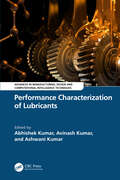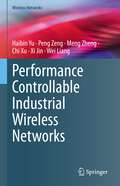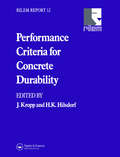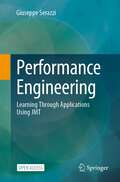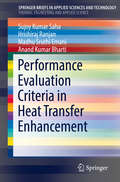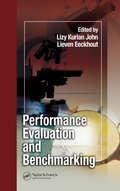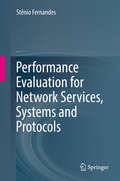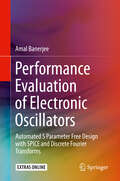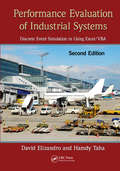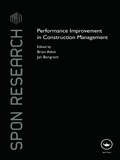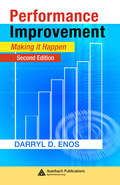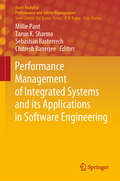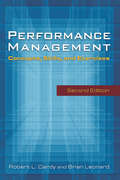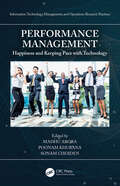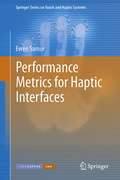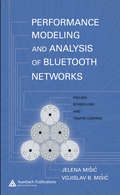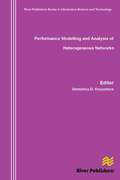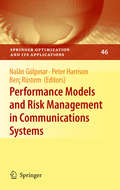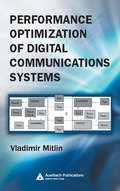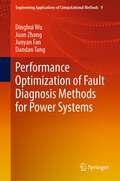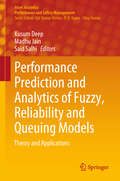- Table View
- List View
Performance Based Building Design 2: From Timber-framed Construction to Partition Walls
by Hugo S. HensJust like building physics, performance based building design was hardly an issue before the energy crises of the 1970ies. With the need to upgrade energy efficiency, the interest in overall building performance grew. The term "performance" encompasses all building-related physical properties and qualities that are predictable during the design stage and controllable during and after construction. The term "predictable" demands calculation tools and physical models that allow evaluating a design, whereas "controllable" presumes the existence of measuring methods available on site. The basis for a system of performance arrays are the functional demands, the needs for accessibility, safety, well-being, durability, energy efficiency and sustainability and the requirements imposed by the usage of a building. In continuation of Vol. 1 this second volume discusses light-weight construction with wooden and metal elements, roofing systems, facades, and ends with finishes and the overall risk analysis. Most chapters build on a same scheme: overview, overall performance evaluation, design and construction. The work is absolutely recommended to undergraduates and graduates in architectural and building engineering, though also building engineers, who want to refresh their knowledge, may benefit. The level of discussion assumes the reader has a sound knowledge of building physics, along with a background in structural engineering, building materials and building construction. Where and when needed, input and literature from over the world was used, reason why each chapter ends listing references and literature.
Performance Characterization of Lubricants (Advances in Manufacturing, Design and Computational Intelligence Techniques)
by Abhishek Kumar, Avinash Kumar, and Ashwani KumarThe text discusses the fundamentals of lubrication science and technology linking the science concepts to engineering practices. It further explores the performance characterization of lubrication systems by utilizing sophisticated experiments and tests and motivates the readers to develop their conclusions and reach solutions based on modern tools and techniques.This book: Presents the principles of surface and lubricant chemistry, and its implementation to devise engineering solutions for various application-based systems. Discusses viscosity index improvers, tribology of green lubricants, and biolubricants from non-edible oils. Highlights 2D nanomaterials lubricants, biogreases, hydrogel and lubricants for extreme temperature and pressure conditions. Explains lubrication for electrical, biomedical, automobile, marine, turbine and aerospace applications. Covers design considerations, formulations, and compositions of lubricants for high-temperature applications in diverse areas. Explores the simulation, computational, and empirical models to characterize, quantify and mitigate the adverse effects of friction. It is primarily written for senior undergraduate and graduate students, and academic researchers in the fields of mechanical engineering, production engineering, industrial engineering, aerospace engineering, and manufacturing engineering.
Performance Controllable Industrial Wireless Networks (Wireless Networks)
by Haibin Yu Wei Liang Xi Jin Chi Xu Peng Zeng Meng ZhengWith the rapid proliferation of information and communications technology, industrial automation has undergone a sweeping transformation toward intelligent manufacturing. Wireless communication is widely considered to be one of the key technologies enabling intelligent manufacturing. On one hand, deterministic communication with high reliability and low latency is typically required in industrial automation applications. On the other hand, wireless communication in industrial settings is hindered by strictly limited communication resources and many other factors which mainly derive from the shared and error-prone nature of the wireless channels used. The limited communication resources and harsh channel conditions pose considerable challenges for reliable, real-time data transmission in industrial wireless networks. Resource optimization methods are vital to ensuring the deterministic performance of industrial wireless networks. Traditional resource optimization methods adopt the isolated resource optimization methods for each protocol layer, which is inherently local-optimal and leads performance uncontrollable. To focus on “Performance Controllable Industrial Wireless Networks”, this book presents thejoint resource optimization methods across multiple protocol layers for industrial wireless networks; reviews recent, major advances; and discusses the practical implementations of the proposed methods. The joint resource optimization methods discussed here will greatly benefit scientists and researchers in the areas of industrial automation and Industrial Internet of Things. To gain the most from this book, readers should have a fundamental grasp of wireless communication, scheduling theory, and convex optimization.
Performance Criteria for Concrete Durability
by H. K. Hilsdorf J. KroppThis is a state-of-the-art report prepared by RILEM Technical Committee 116-PCD and is an authoritative, international review of the subject and is an essential reference source for engineers and technologists. Performance Criteria for Concrete Durability explains key aspects of concrete durability, and the relationships between transport mechanism
Performance Engineering: Learning Through Applications Using JMT
by Giuseppe SerazziThis open access book improves the users' skills needed to implement models for performance evaluation of digital infrastructures. Building a model is usually a relatively easy task, but making it an accurate representation of the phenomenon to be reproduced is a completely different matter. It is well-known that to increase the ability to build reliable models it is necessary to accumulate experience. The book addresses this need by presenting a collection of case studies of increasing complexity. Readers are introduced to the modeling process gradually, learning the basic concepts step-by-step as they go through the case studies. Queueing Networks are used to design the models solved with simulation and analytical techniques from the open source Java Modelling Tools (JMT). Among the models analyzed there are systems for optimizing performance, identifying bottlenecks, evaluating the impact of the variability of traffic and service demands, analyzing the effects of synchronization policies in parallel computing. Four case studies derived from real-life scenarios are also presented: a surveillance system, autoscaling load fluctuations, web app workflow simulation, and crowd computing platform. This book serves as a reference tool for graduate and senior-level computer science students in courses of performance evaluation and modeling, as well as for researchers and practitioners.
Performance Evaluation Criteria in Heat Transfer Enhancement (SpringerBriefs in Applied Sciences and Technology)
by Sujoy Kumar Saha Hrishiraj Ranjan Madhu Sruthi Emani Anand Kumar BhartiThis Brief deals with Performance Evaluation Criteria (PEC) for heat exchangers, single phase flow, objective function and constraints, algebraic formulation, constant flow rate, fixed flow area, thermal resistance, heat exchanger effectiveness, relations for St and f, finned tube banks, variations of PEC, reduced exchanger flow rate, exergy based PEC, PEC for two-phase heat exchangers, work consuming, work producing and heat actuated systems. The authors explain Performance Criteria of Enhanced Heat Transfer Surfaces—the ratio of enhanced performance to the basic performance—and its importance for Heat Transfer Enhancement and efficient thermal management in devices.
Performance Evaluation Models for Distributed Service Networks (Studies in Systems, Decision and Control #343)
by Grzegorz Bocewicz Jarosław Pempera Victor ToporkovThis book presents novel approaches to formulate, analyze, and solve problems in the area of distributed service networks, notably based on AI-related methods (parallel/cloud computing, declarative modeling, fuzzy methods). Distributed service networks are an important area of research and applications. The methods presented are meant to integrate both emerging and existing concepts and approaches for different types of production flows through synchronizations. An integration of logistics services (e.g., supply chains and projects portfolios), public and multimodal transport, traffic flow congestion management in ad hoc networks, design of high-performance cloud data centers, and milk-run distribution networks are shown as illustrations for the methods proposed. The book is of interest to researchers and practitioners in computer science, operations management, production control, and related fields.
Performance Evaluation and Benchmarking
by Lizy Kurian John Lieven EeckhoutComputer and microprocessor architectures are advancing at an astounding pace. However, increasing demands on performance coupled with a wide variety of specialized operating environments act to slow this pace by complicating the performance evaluation process. Carefully balancing efficiency and accuracy is key to avoid slowdowns, and such a balance can be achieved with an in-depth understanding of the available evaluation methodologies. Performance Evaluation and Benchmarking outlines a variety of evaluation methods and benchmark suites, considering their strengths, weaknesses, and when each is appropriate to use.Following a general overview of important performance analysis techniques, the book surveys contemporary benchmark suites for specific areas, such as Java, embedded systems, CPUs, and Web servers. Subsequent chapters explain how to choose appropriate averages for reporting metrics and provide a detailed treatment of statistical methods, including a summary of statistics, how to apply statistical sampling for simulation, how to apply SimPoint, and a comprehensive overview of statistical simulation. The discussion then turns to benchmark subsetting methodologies and the fundamentals of analytical modeling, including queuing models and Petri nets. Three chapters devoted to hardware performance counters conclude the book.Supplying abundant illustrations, examples, and case studies, Performance Evaluation and Benchmarking offers a firm foundation in evaluation methods along with up-to-date techniques that are necessary to develop next-generation architectures.
Performance Evaluation and Benchmarking of Intelligent Systems
by Raj Madhavan Elena Messina Edward TunstelThis contributed volume is dedicated to the subject of performance evaluation and benchmarking of intelligent systems by drawing from the experiences and insights of experts gained both through theoretical development and practical implementation of intelligent systems in a variety of application domains. The chapters cover a range of applications, such as assistive robotics, planetary surveying, urban search and rescue, and line tracking for automotive assembly. Subsystems include human-robot interaction, multi-robot coordination, communications, perception, and mapping, Chapters also cover simulation support and open source software for cognitive platforms, providing examples of enabling underlying technologies that can help intelligent systems to propagate and increase in capabilities. Performance Evaluation and Benchmarking of Intelligent Systems serves as a professional reference for researchers and practitioners in a variety of fields.
Performance Evaluation and Design of Flight Vehicle Control Systems
by Eric T. FalangasThe purpose of this book is to assist analysts, engineers, and students toward developing dynamic models, and analyzing the control of flight vehicles with various blended features comprising aircraft, launch vehicles, reentry vehicles, missiles and aircraft. Graphical methods for analysing vehicle performance Methods for trimming deflections of a vehicle that has multiple types of effectors Presents a parameters used for speedily evaluating the performance, stability, and controllability of a new flight vehicle concept along a trajectory or with fixed flight conditions
Performance Evaluation for Network Services, Systems and Protocols
by Stênio FernandesThis book provides a comprehensive view of the methods and approaches for performance evaluation of computer networks. It offers a clear and logical introduction to the topic, covering both fundamental concepts and practical aspects. It enables the reader to answer a series of questions regarding performance evaluation in modern computer networking scenarios, such as ‘What, where, and when to measure?’, ‘Which time scale is more appropriate for a particular measurement and analysis?’, 'Experimentation, simulation or emulation? Why?’, and ‘How do I best design a sound performance evaluation plan?’. The book includes concrete examples and applications in the important aspects of experimentation, simulation and emulation, and analytical modeling, with strong support from the scientific literature. It enables the identification of common shortcomings and highlights where students, researchers, and engineers should focus to conduct sound performance evaluation. This book is a useful guide to advanced undergraduates and graduate students, network engineers, and researchers who plan and design proper performance evaluation of computer networks and services. Previous knowledge of computer networks concepts, mechanisms, and protocols is assumed. Although the book provides a quick review on applied statistics in computer networking, familiarity with basic statistics is an asset. It is suitable for advanced courses on computer networking as well as for more specific courses as a secondary textbook.
Performance Evaluation of Electronic Oscillators: Automated S Parameter Free Design with SPICE and Discrete Fourier Transforms
by Amal BanerjeeThis book demonstrates a novel, efficient and automated scheme to design and evaluate the performance of electronic oscillators, operating at the 100s of Megahertz to 10s of Gigahertz frequencies. The author describes a new oscillator design and performance evaluation scheme that addresses all the issues associated with the traditional S parameter (large, small signal) based oscillator design technique by exploiting the properties of a new breed of RF or microwave transistors, the powerful Discrete Fourier Transform and the SPICE tool's transient analysis. Readers will benefit from an exhaustive set of detailed, step-by-step oscillator (feedback, negative resistance, crystal and differential) design examples, as well as the software tools (C executables) used to create the design examples. Designers will be enabled to eliminate the complexities of the traditional oscillator design/performance evaluation scheme using S (large, small) parameter, resulting in accurate, robust and reliable designs.Describes an efficient, automated oscillator design and performance evaluation scheme that addresses all the challenges associated with the traditional S parameter (large, small signal) based oscillator design;Provides numerous step-by-step design examples, illustrating the details of the new scheme presented;Includes C executables that run on both Linux and Windows, which the reader can use to experiment and design any oscillator (feedback common emitter or base, negative resistance common emitter or base or differential).
Performance Evaluation of Industrial Systems: Discrete Event Simulation in Using Excel/VBA, Second Edition
by David Elizandro Hamdy TahaBasic approaches to discrete simulation have been process simulation languages (e.g., GPSS) and event-scheduling type (e.g., SIMSCRIPT). The trade-offs are that event-scheduling languages offer more modeling flexibility and process-oriented languages are more intuitive to the user. With these considerations in mind, authors David Elizandro and Hamd
Performance Improvement in Construction Management (Spon Research)
by Brian Atkin Jan BorgbrantNovel research in construction management is often distant from existing practice. This collection of reviews serves to bridge this gap under three major themes: innovation, organisation and human behaviour, and methods and tools. It outlines a series of successful collaborative projects between industry and the academic and research communities. Many of the authors have worked in technology transfer, as change agents, resolving industrially-relevant problems by using scientifically-based research. The book reveals the source of ideas, data and results to provide a useful resource for researchers, academics and graduate students, and a challenging guide for senior industry managers.
Performance Improvement: Making it Happen, Second Edition
by Darryl D. Enos Dana Vincent J.M. Suzanna E. M.D.Combining state-of-the-art knowledge and techniques in organizational development with practical experiences using a step-by-step approach, Performance Improvement: Making it Happen provides important principles and techniques of organizational development to improve performance. Based on experiences of over 300 organizations, this second edition features real-world examples from a variety of industries that illustrate the different types of problems presented throughout the text as well as the various methods of improvement. In addition, this text also demonstrates numerous ways of measuring organizational improvement after implementing these concepts and methods.
Performance Management of Integrated Systems and its Applications in Software Engineering (Asset Analytics)
by Millie Pant Tarun K. Sharma Sebastián Basterrech Chitresh BanerjeeThis book presents a key solution for current and future technological issues, adopting an integrated system approach with a combination of software engineering applications. Focusing on how software dominates and influences the performance, reliability, maintainability and availability of complex integrated systems, it proposes a comprehensive method of improving the entire process. The book provides numerous qualitative and quantitative analyses and examples of varied systems to help readers understand and interpret the derived results and outcomes. In addition, it examines and reviews foundational work associated with decision and control systems for information systems, to inspire researchers and industry professionals to develop new and integrated foundations, theories, principles, and tools for information systems. It also offers guidance and suggests best practices for the research community and practitioners alike.The book’s twenty-two chapters examine and address current and future research topics in areas like vulnerability analysis, secured software requirements analysis, progressive models for planning and enhancing system efficiency, cloud computing, healthcare management, and integrating data-information-knowledge in decision-making. As such it enables organizations to adopt integrated approaches to system and software engineering, helping them implement technological advances and drive performance. This in turn provides actionable insights on each and every technical and managerial level so that timely action-based decisions can be taken to maintain a competitive edge. Featuring conceptual work and best practices in integrated systems and software engineering applications, this book is also a valuable resource for all researchers, graduate and undergraduate students, and management professionals with an interest in the fields of e-commerce, cloud computing, software engineering, software & system security and analysis, data-information-knowledge systems and integrated systems.
Performance Management: Concepts, Skills and Exercises (Human Resource Management Ser.)
by Robert Cardy Brian LeonardThis comprehensive text provides an engaging examination of the entire process of performance management. It balances concepts with practical skill-based exercises, and gives readers both an understanding of performance management and the ability to manage performance. An online Instructor's Manual is available to adopters, and free PPTs are available through the author's website.
Performance Management: Happiness and Keeping Pace with Technology (Information Technology, Management and Operations Research Practices)
by Madhu Arora Poonam Khurana Sonam ChoidenThe entrance of fast-paced technology into the workplace necessitates a proper re-look into performance management whether it is in education, marketing, finance, or information technology. Maintaining happiness and wellbeing despite the pressure of performance at work is a serious challenge. Happiness is not only important for work performance, but also for the physical and mental health of human beings. This book provides different concepts, theories, and methods to better understand the relationship between performance and happiness in the context of work in this information and technology era. Various domains of performance management are covered in the context of management and information technology, including topics related to the performance of digital wallets from the customer's point of view; evaluating the sustainability of micro-finance institutions; challenges in employee retention; problems the workforce faces in IT and management; dimensions of happiness for women in the workplace; the role of happiness in building a meaningful life; and the quality of work life. The findings are useful for practical applications in management and business scenarios. They also provide informative insights for researchers, academicians, industry professionals, and scholars.
Performance Metrics for Haptic Interfaces
by Evren SamurHaptics technology is being used more and more in different applications, such as in computer games for increased immersion, in surgical simulators to create a realistic environment for training of surgeons, in surgical robotics due to safety issues and in mobile phones to provide feedback from user action. The existence of these applications highlights a clear need to understand performance metrics for haptic interfaces and their implications on device design, use and application. Performance Metrics for Haptic Interfaces aims at meeting this need by establishing standard practices for the evaluation of haptic interfaces and by identifying significant performance metrics. Towards this end, a combined physical and psychophysical experimental methodology is presented. Firstly, existing physical performance measures and device characterization techniques are investigated and described in an illustrative way. Secondly, a wide range of human psychophysical experiments are reviewed and the appropriate ones are applied to haptic interactions. The psychophysical experiments are unified as a systematic and complete evaluation method for haptic interfaces. Finally, synthesis of both evaluation methods is discussed. The metrics provided in this state-of-the-art volume will guide readers in evaluating the performance of any haptic interface. The generic methodology will enable researchers to experimentally assess the suitability of a haptic interface for a specific purpose, to characterize and compare devices quantitatively and to identify possible improvement strategies in the design of a system.
Performance Modeling and Analysis of Bluetooth Networks: Polling, Scheduling, and Traffic Control
by Jelena Misic Vojislav B. MisicUntil now, developers and researchers interested in the design, operation, and performance of Bluetooth networks have lacked guidance about potential answers and the relative advantages and disadvantages of performance solutions.Performance Modeling and Analysis of Bluetooth Networks: Polling, Scheduling, and Traffic Control summarizes t
Performance Modelling and Analysis of Heterogeneous Networks (River Publishers Series In Information Science And Technology Ser.)
by Demetres D. KouvatsosOver the recent years, a considerable amount of effort has been devoted, both in industry and academia, towards the performance modelling, evaluation and prediction of convergent multi-service heterogeneous networks, such as wireless and optical networks, towards the design and dimensioning of the next and future generation Internets.This book follows Heterogeneous Networks: Traffic Engineering, Performance Evaluation Studies and Tools and presents recent advances in networks of diverse technology reflecting the state-of-the-art technology and research achievements in performance modelling, analysis and applications worldwide.Technical topics discussed in the book include:• Multiservice Switching Networks;• Multiservice Switching Networks;• Wireless Ad Hoc Networks;• Wireless Sensor Networks;• Wireless Cellular Networks;• Optical Networks;Heterogeneous Networks:- Performance Modelling and Analysis contains recently extended research papers, which have their roots in the series of the HET-NETs International Working Conferences focusing on the 'Performance Modelling and Evaluation of Heterogeneous Networks' under the auspices of the EU Networks of Excellence Euro-NGI and Euro-FGI.Heterogeneous Networks: Performance Modelling and Analysis is ideal for personnel in computer/communication industries as well as academic staff and master/research students in computer science, operational research, electrical engineering and telecommunication systems and the Internet.KeywordsHeterogeneous networks, performance modelling and analysis, wired networks, wireless networks: ad hoc, sensor and cellular, optical networks, next and future generation Internets.
Performance Models and Risk Management in Communications Systems
by Berc Rustem Nalân Gülpınar Peter G. HarrisonThis volume covers recent developments in the design, operation, and management of mobile telecommunication and computer systems. Uncertainty regarding loading and system parameters leads to challenging optimization and robustness issues. Stochastic modeling combined with optimization theory ensures the optimum end-to-end performance of telecommunication or computer network systems. In view of the diverse design options possible, supporting models have many adjustable parameters and choosing the best set for a particular performance objective is delicate and time-consuming. An optimization based approach determines the optimal possible allocation for these parameters. Researchers and graduate students working at the interface of telecommunications and operations research will benefit from this book. Due to the practical approach, this book will also serve as a reference tool for scientists and engineers in telecommunication and computer networks who depend upon optimization.
Performance Optimization of Digital Communications Systems
by Vladimir MitlinBecause fine-tuning the parameters of a system is critical to a developer's success, Performance Optimization of Digital Communications Systems examines particular optimization problems in digital communications, presenting analytical techniques in combination with SystemView and MATLAB simulations.
Performance Optimization of Fault Diagnosis Methods for Power Systems (Engineering Applications of Computational Methods #9)
by Juan Zhang Dinghui Wu Junyan Fan Dandan TangThis book focuses on the performance optimization of fault diagnosis methods for power systems including both model-driven ones, such as the linear parameter varying algorithm, and data-driven ones, such as random matrix theory. Studies on fault diagnosis of power systems have long been the focus of electrical engineers and scientists. Pursuing a holistic approach to improve the accuracy and efficiency of existing methods, the underlying concepts toward several algorithms are introduced and then further applied in various situations for fault diagnosis of power systems in this book. The primary audience for the book would be the scholars and graduate students whose research topics including the control theory, applied mathematics, fault detection, and so on.
Performance Prediction and Analytics of Fuzzy, Reliability and Queuing Models: Theory and Applications (Asset Analytics)
by Kusum Deep Madhu Jain Said SalhiThis book presents the latest developments and breakthroughs in fuzzy theory and performance prediction of queuing and reliability models by using the stochastic modeling and optimization theory. The main focus is on analytics that use fuzzy logic, queuing and reliability theory for the performance prediction and optimal design of real-time engineering systems including call centers, telecommunication, manufacturing, service organizations, etc. For the day-to-day as well as industrial queuing situations and reliability prediction of machining parts embedded in computer, communication and manufacturing systems, the book assesses various measures of performance and effectiveness that can provide valuable insights and help arrive at the best decisions with regard to service and engineering systems. In twenty chapters, the book presents both theoretical developments and applications of the fuzzy logic, reliability and queuing models in a diverse range of scenarios. The topics discussed will be of interest to researchers, educators and undergraduate students in the fields of Engineering, Business Management, and the Mathematical Sciences.

